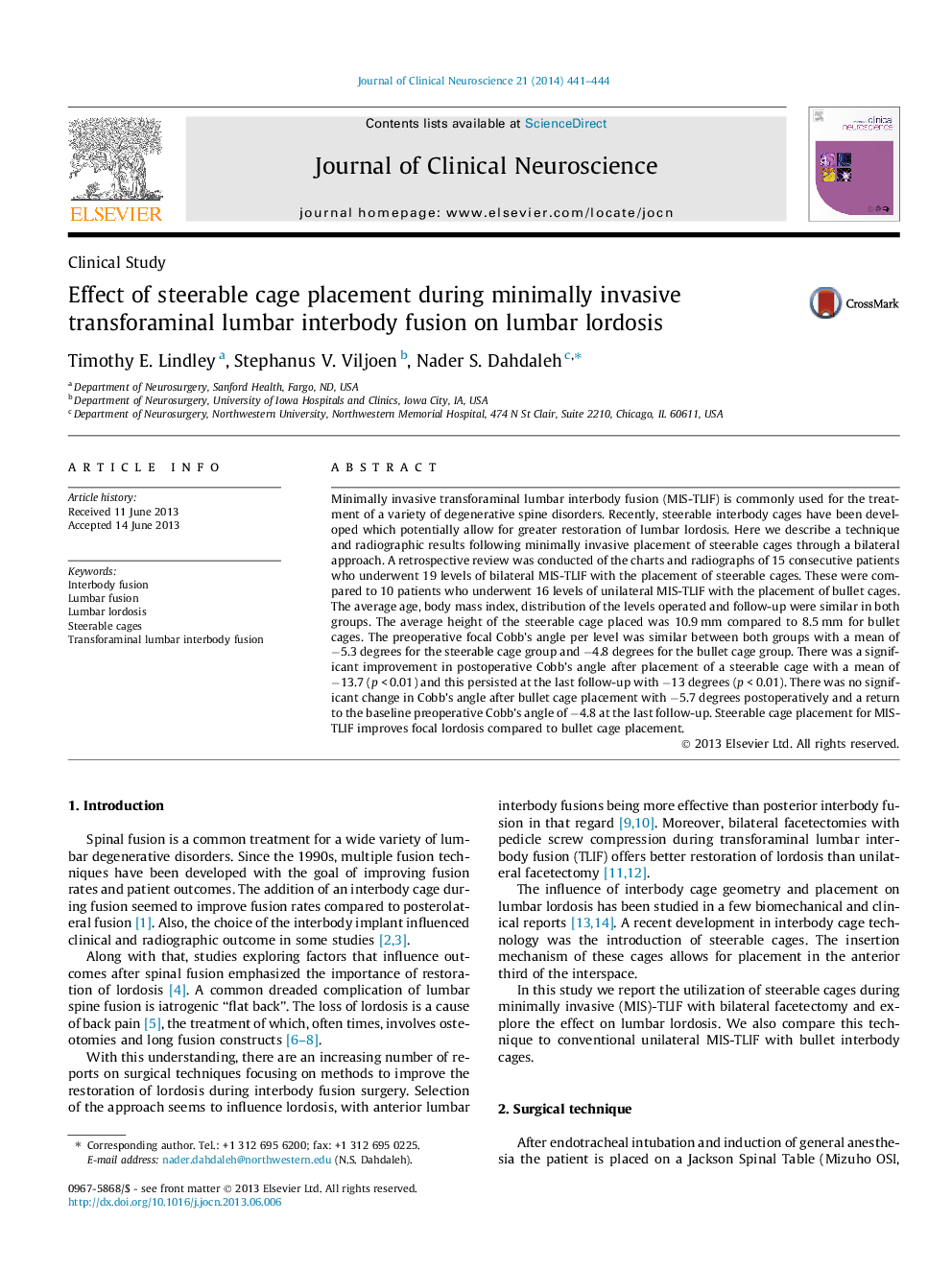| Article ID | Journal | Published Year | Pages | File Type |
|---|---|---|---|---|
| 3059438 | Journal of Clinical Neuroscience | 2014 | 4 Pages |
Minimally invasive transforaminal lumbar interbody fusion (MIS-TLIF) is commonly used for the treatment of a variety of degenerative spine disorders. Recently, steerable interbody cages have been developed which potentially allow for greater restoration of lumbar lordosis. Here we describe a technique and radiographic results following minimally invasive placement of steerable cages through a bilateral approach. A retrospective review was conducted of the charts and radiographs of 15 consecutive patients who underwent 19 levels of bilateral MIS-TLIF with the placement of steerable cages. These were compared to 10 patients who underwent 16 levels of unilateral MIS-TLIF with the placement of bullet cages. The average age, body mass index, distribution of the levels operated and follow-up were similar in both groups. The average height of the steerable cage placed was 10.9 mm compared to 8.5 mm for bullet cages. The preoperative focal Cobb’s angle per level was similar between both groups with a mean of −5.3 degrees for the steerable cage group and −4.8 degrees for the bullet cage group. There was a significant improvement in postoperative Cobb’s angle after placement of a steerable cage with a mean of −13.7 (p < 0.01) and this persisted at the last follow-up with −13 degrees (p < 0.01). There was no significant change in Cobb’s angle after bullet cage placement with −5.7 degrees postoperatively and a return to the baseline preoperative Cobb’s angle of −4.8 at the last follow-up. Steerable cage placement for MIS-TLIF improves focal lordosis compared to bullet cage placement.
